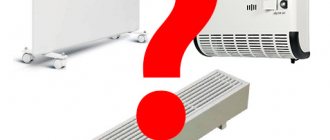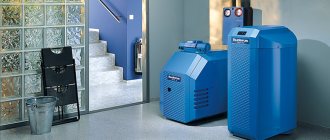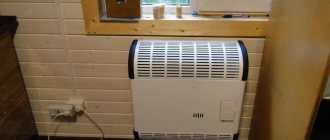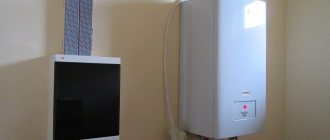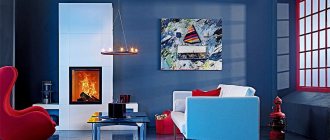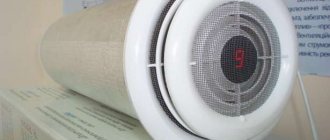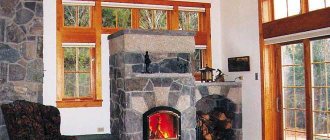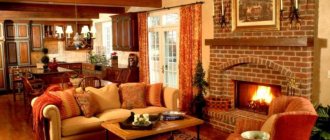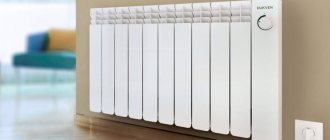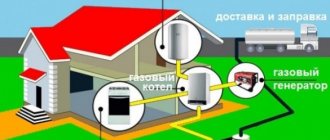Do you have your own home and want to understand how to heat it most expediently, economically and safely? Most often, to solve these problems, the option with electricity is chosen. However, choice is a complex process, so when organizing a system, you often have to consider many options. The most common of them:
- Turn out the oven. But this involves a lot of related worries (firewood, cleaning the chimney, etc.).
- Gas heating. It is environmentally friendly, convenient, there are almost no associated worries, but in order to supply gas to the house, it is necessary to make a project to supply gas to the house, which will entail large costs.
- Heating systems operating on flammable substances. It is necessary to purchase fuel and periodically clean the fires. Difficulty can also arise if you do not live in the house all the time, but only in the spring and autumn. Controlling heating in winter becomes problematic.
- There is only one thing left - heating a country house with electricity. Electric convectors are environmentally friendly, very simple and there are no associated worries. In addition, there are systems available for remote control of heaters.
Advantages of using electric convectors for heating a home
Convector heating of a house is not only the simplest, but also the most cost-effective option.
With this type of room heating, there is no need to spend money on purchasing additional equipment or paying for the work of specialists to install a complex system. The convector does not require either pipe laying or installation and adjustment of the heating boiler - you just need to attach it to the installation site using special parts. Using a convector to heat a private house, it is also possible to almost completely eliminate heat loss, which is impossible when using a heating boiler or pipes. This is achieved due to the fact that in an electric convector all heating elements are located inside the housing.
Other advantages of convectors include high efficiency, fast heating speed and fairly accurate maintenance of the set temperature in the room. Electronically controlled convectors help reduce energy consumption.
Application of solar energy
We warm the water with the sun. What does this look like in practice?
- If the system is based only on solar energy, then a solar collector for heating and water heating will be responsible for delivering heat to the apartment. An option using a panel battery is also possible.
- In summer, solar energy is not at all useless, because it can be used to heat greenhouses or a swimming pool.
- When choosing a hybrid, heating will be provided not only by solar energy, but also by geothermal pumps. This option is preferable for places where the number of partly cloudy days in winter is limited.
- The geothermal circuit in a hybrid system will act as a thermal accumulator, storing heat that is consumed later if necessary.
How to calculate the required number of devices
As a rule, to calculate the power and number of devices required to heat a room, a formula is used based on 100 W per 1 sq.
m. For example, for a room of 15 square meters. m requires equipment with a power of 1.5 kW. It is best to install convectors under the window - 1 convector for each of them. This will allow you to heat the room with maximum efficiency. Accordingly, for a room of 15 square meters. m and three windows, it is best to purchase 3 convectors with a power of 0.5 kW each and install them under the windows to prevent the penetration of cold air into the room.
How much electricity does a light bulb consume?
Good day, dear friends! Today we’ll talk about saving electricity again, in previous articles we calculated how much electricity household appliances (vacuum cleaner, microwave) consume, and today we’ll try to calculate how much electricity light bulbs consume in your home, and whether it’s possible to somehow save on electricity consumption by light bulbs.
So, let’s first figure out what kind of light bulbs we have in our apartment; the following types are most often used in everyday life:
- Incandescent
- Luminescent (energy saving)
- LED
Incandescent lamps
Let's calculate how much electricity is consumed by ordinary light bulbs of different wattages, the most popular ones in everyday life.
Power consumption: Power 60 W - energy consumption will be 60 W or 0.06 kilowatts per 1 hour Power 95 W - consumes electricity 95 W 0.095 kilowatts per 1 hour
Power 100W - will consume 100 or 0.1 kilowatt W of electricity in 1 hour.
To convert electricity from watts to kilowatts, you need to count 3 digits from right to left and put a comma in front of it; if there are only two digits or 1, then put 1 or 2 more zeros in front of this digit. For example, 75W = 0.075 kW since the numbers 2 were added 0 to move them by 3 digits. 7 W = 0.007 kW, for 155W = 0.155 kW.
Let's calculate how much we will pay for the use of light if, for example, we have 3 acres (hall, kitchen, bedroom) and 3 for 60 W (hallway, toilet, bathroom).
How much electricity do we spend?
Let's take for example 3 at 100W burn for 5 hours in the evening and 1 hour in the morning for a total of 6 hours a day, we get 3 pieces per hour winding 300 W in 6 hours 1800W or 1.8 kW. Another 3 at 60W let's assume that each burns 1 hour a day, we get a total of 3 * 60 W = 180 W or 0.18 kW. Total per day is about 2 kilowatts.
How much electricity does an air conditioner consume?
When using incandescent lamps, electricity consumption will be as follows: Total for 1 day will be equal to 1.8 kW + 0.18 kW ~ 2 kW Total for 1 month will be 2 kW * 30 days = 60 kW
How much will you have to pay?
Let's take the cost for 1 kilowatt = 4 rubles. Then for 1 hour of a 60W lamp we will pay 0.06 * 4 r = 24 kopecks.
for 1 hour lamp 95 or 100 W = 0.1 * 4 r = 40 kopecks.
When using 6 light bulbs 3 - 100 W 6 hours / day and 3-60 W 1 hour 180 watts / day, we calculate: Expenses for 1 day we get 2 kW * 4 r = 8 rubles per day
for 1 month 60 kW * 4 r = 240 rub. in 1 month
Before moving on to calculating the energy consumption of the following types of lamps, you should take into account that with the same lighting power, the power consumption will differ significantly. Therefore, for further calculations we will take light bulbs with the same luminous power as conventional incandescent lamps.
We present a table corresponding to the power consumption of light bulbs with the same luminous flux. That is, each column of the table represents the same glow power. The first line is the power of an energy-saving lamp, the second line is the power of an incandescent lamp with the corresponding luminous flux.
From the 1st column we see that a 6-watt energy-saving lamp shines the same way as a 30-watt incandescent lamp.
The following 2-line plate shows the ratio of LED to incandescent bulbs.
Fluorescent lamps (energy saving)
Then, in order for the house to remain as bright as with conventional light bulbs, you need to install the corresponding light bulbs, that is, instead of 60 watts, we put an energy-saving 12W, instead of a hundred we put an energy-saving 20W, this way we will reduce energy consumption and pay 5 times less.
How much energy does a convector consume?
LED
Lamps of this type are even more economical and consume electricity not 5 times less than conventional light bulbs, but 7 times. That is, if we want to replace 75 watts, then an LED one will be suitable for 10 watts, while the glow will remain the same.
Having expenses for 1 month when using ordinary llamas, we get 240 rubles / 7 = 34 rubles per month, we will pay for lighting fixtures. And per year instead of 2880 we will pay 408 rubles.
How much electricity does the heater consume?
What is more profitable?
When determining the most economical option, consider the operating time of each type of llama and their cost. We immediately discard the usual ones because they burn out more often and consume more.
But you need to figure out energy-saving and LED ones. Energy-saving - price about 250 rubles, service life 10,000 hours (4.6 years)
LED - price about 350 rubles, service life 30,000 hours (14 years with 6 hour use)
For 14 years we will pay for energy-saving ones - 576 * 14 = 8064 rubles + replace light bulbs 3 times For 14 years for LED ones - 408 * 14 = 5712 rubles.
When calculating, we took average figures, but someone has large production areas with lighting in which only replacing light bulbs will help save decent amounts of money in their wallet.
Electricity costs
It is not difficult to calculate the approximate financial costs of heating a country house with an electric convector if you know the total power of all devices (provided that more than one device is used), as well as the cost of 1 kW according to the current tariff.
It is worth considering that the convector does not work constantly - it turns off when the set temperature values are reached, and turns on again when the air temperature in the room drops. Therefore, the final amount will be significantly lower. These are, of course, approximate calculations, since the operation of the device is also influenced by many nuances that are difficult to calculate in advance.
Comparative table of the cost of organizing heating
| House area, m2 | Heating method | Manufacturer and model | Total cost, rub. | Price of 1 kW of thermal power, rub. |
| 60 | Electric convectors | Ballu BEC/EZMR-2000 (3 pcs.) | 3 000*3 = 9 000 | 1 500 |
| Electric convectors | REDMOND SkyHeat C4519S (3 pcs.): el. control, connection and programming via app | 9 600*3 = 28 800 | 4 800 | |
| Electric boiler and radiators | Protherm Skat 6 KR 13 + Rifar Base 500 x6 (4 pcs.) + harness | 32 000 + 4 200*4 + 5 000 = 53 800 | 8 966,6 | |
| 100 | Electric convectors | Ballu BEC/EZMR-2000 (6 pcs.) | 3 000*6 = 18 000 | 1 800 |
| Electric boiler and radiators | Protherm Skat 12 KR 13 + Rifar Base 500 x6 (9 pcs.) + harness | 35 000 + 4 200*9 + 6 000 = 78 800 | 7 880 | |
| 150 | Electric convectors | Noirot CNX-4 1500 (10 pcs.) | 6 300*10 = 63 000 | 4 200 |
| Electric boiler and radiators | Vaillant eloBLOCK VE 18 Rifar Base 500 x6 (13 pcs.) | 39 000 + 4 200*13 + 9 000 = 102 600 | 6 840 |
As you can see from the table, the larger the area of the house, the higher the cost of each kW of thermal energy obtained when heating with convectors and the lower when heating with an electric boiler. At the same time, the advantages and efficiency of an electric boiler are obvious.
BoilersHeatersElectric boilers
How to reduce costs
To keep heating costs at home lower, it is necessary to ensure minimal heat loss in the room.
Most of the heat escapes through doors, windows, attics and walls. Therefore, if the task is to reduce heat loss, first of all you should:
- Insulate windows by installing triple glazing or reducing window openings (or the number of windows). This will provide up to 10-20% heat retention.
- Insulate the doors. Or replace them with new ones with good thermal insulation.
- Insulate the attic. This will provide about 5-10% more heat.
- Insulate the walls by covering them with high-quality thermal insulation material. This gives another plus 20-30% or even 70% of heat.
Power calculation
To buy a device with optimal power, the thermal conditions of the apartment are calculated. For this, the following formula is used: CT = (OP x RT x PC) / 860. Explanation of the formula:
- CT—amount of heat.
- OP is the volume of the room. If there are several rooms, then the volume of each is first calculated separately, and then the results are summed up.
- RT - temperature difference. Let’s say it’s -5 °C outside, but you want to get +15 °C indoors - to find RT, you need to subtract -5 °C from +15 °C. We get: 15 – (–5) = 20.
- PC is a correction factor, the size of which varies depending on the type of walls. If the walls are wooden, then it will be equal to 4, if standard brickwork is used in one layer - 3, in two layers - 2, concrete heat-saving slabs - 1, improved heat-saving systems - 0.5.
- 860 is a special correction factor by which the result is divided in order to convert the units of measurement into kilowatts.
Attention! This formula is approximate. For a more accurate calculation, it is recommended to seek help from a qualified specialist.
How to choose a convector for a private home
When choosing electric convectors for heating a private home, first of all you should pay attention to such characteristics as the power of the equipment, the manufacturer’s brand, design, type of control and additional functions provided in the device.
The power of the equipment has already been discussed in some detail above. As for the design, the convector must be in harmony with the space surrounding it, so it is necessary to choose a model that will organically fit into the decor of the room and will not look like an alien element against the general background. Today, the market offers a huge selection of convectors of various designs and colors, as well as decorative panels for them, so choosing a model that suits the features of the interior will not be difficult.
The brand of equipment is also important - it is a guarantee of its quality and reliability. By choosing from trusted, well-proven brands, you can be sure that the equipment will last a long time and will cope with its main tasks as efficiently as possible.
If it is necessary for the convector to maintain the set temperature with extreme accuracy, you should focus on devices with electronic control - they will maintain the set parameters with an accuracy of 0.5°C. Models with mechanical control cannot boast of such high performance, and it is on them that energy consumption depends. Accordingly, by investing in an electronically controlled convector, you can count on reducing your electricity costs in the future.
Additional functions will make using the convector as comfortable as possible. These include an automatic shutdown timer, a remote control, protection against overheating and power surges, the ability to remotely control using a mobile application, etc. For country houses, the “anti-freeze” function will be useful, which will allow you to maintain a constant minimum temperature in the room from +5 to +8 °C when no one is there for a long time.
To heat a country house, it is better to choose a convector that is installed on legs on the floor, since it has greater mobility than other models.
It can be rearranged and the heating zone can be adjusted with its help.
Rules for installing a gas boiler in an apartment in an apartment building
Where is the best place to place the boiler?
The most rational, practical and frequently used option is to locate heating equipment in the kitchen. Often it already meets the necessary requirements for the room; the kitchen has water and gas connections. It is definitely not possible to install a gas boiler in living rooms and bathrooms. As for the vestibule, corridor and other similar premises: in more than 90% of cases they do not comply with SNiP 42-01 and MDS 41.2-2000, i.e. simply do not meet the requirements.
Premises requirements
Schematic representation of room requirements.
In accordance with the requirements of SNiP 42-01 and MDS 41.2-2000, in the room where gas-using equipment is installed there must be:
- ceiling height – at least 2.5 m (room area more than 4 m2);
- the presence of an openable window with an area of 0.03 m2 per cubic meter. meter of room volume (as well as structures with a fire resistance limit of at least REI 45, protecting the room from neighboring ones);
- There should be a free space of 1 meter in front of the boiler;
- the presence of a door with a width of at least 80 cm and a gap at the bottom of at least 2 cm;
- the presence of ventilation based on the calculation - exhaust in the volume of 3 times the air exchange of the room per hour, inflow in the exhaust volume + the volume of air for gas combustion.
Chimney requirements
In building codes and regulations, there are also requirements for the chimney of a gas boiler. The local gas supply company will not accept the boiler and will not allow it to be connected to the gas mains if the gas duct does not meet the requirements described below:
- the cross-section of the outlet channel should not be less than the cross-section of the corresponding boiler pipe;
- gas boilers with an upper outlet pipe must be connected with a vertical section of at least 25 cm, only after which bends are allowed;
- no more than 3 bends are allowed along the entire length of the chimney;
- there must be at least 20 cm between the chimney outlet through the wall and the ceiling;
- products from open combustion chambers are discharged into the chimney, and from closed combustion chambers - both into the chimney and outside through a coaxial (two-pipe) chimney.
Convector safety
The safety of home heating devices is one of the most important characteristics. For this purpose, modern models of electric convectors provide systems such as:
- Moisture protection – allows you to use convectors in rooms with high humidity without risk;
- Tip-over protection – turns off the device if it falls;
- Overheating protection – ensures automatic shutdown of the device when the set temperature values are reached, and after cooling, turns it on again.
Suitable Models
Electric convectors for home heating from the NOBO company and control of all possible electrical appliances within the facility, as well as from anywhere in the world, via SMS commands (Orion 700+GSM) or via the Internet (Energy control) is the best option.
For wooden houses, heaters of the Viking series (C2F - C4F and C2N - C4N) with a side exit of hot air into the room are more often used. The body of such convectors heats up slightly and therefore burns from contact or, moreover, fire of nearby objects is completely excluded.
In Oslo series convectors, hot air from the convector comes out upward, so it is advisable to install them under windows or on walls that border with outside air. The body of the convectors of this series, like that of Viking, does not heat up to very high temperatures, and therefore cannot cause burns or fire.
Oslo convectors have removable thermostats to regulate and maintain the air temperature in the room; there are also manually controlled thermostats or more complex ones with the possibility of remote control via the Internet or SMS commands.
Principle of operation
A special feature of the functioning of an infrared heater is the spread of electromagnetic rays onto objects. At the same time, the air space receives heat from heated walls and furniture. This feature is comparable to the penetration of sunlight. If we talk about other heating devices, then, for example, a heating cable supplies heat only to the floor, an electric convector, an electric boiler, an oil heater work on the surrounding air, through which the objects in the room are heated. It is better to direct IR rays not at walls, windows and doors, but at furniture and interiors, so that heat is saved and does not escape outside.
